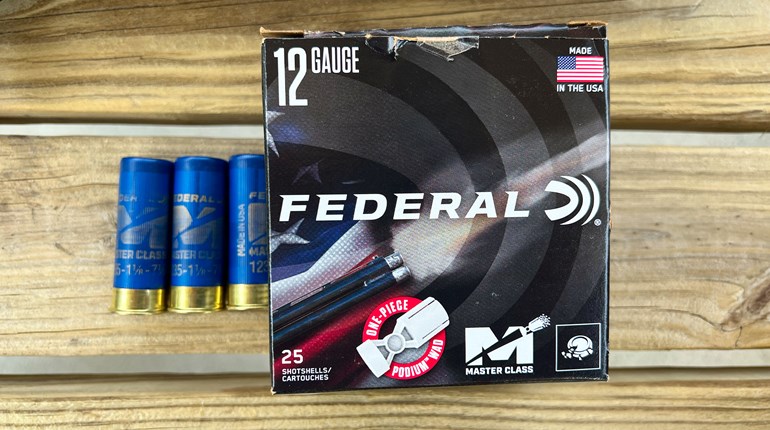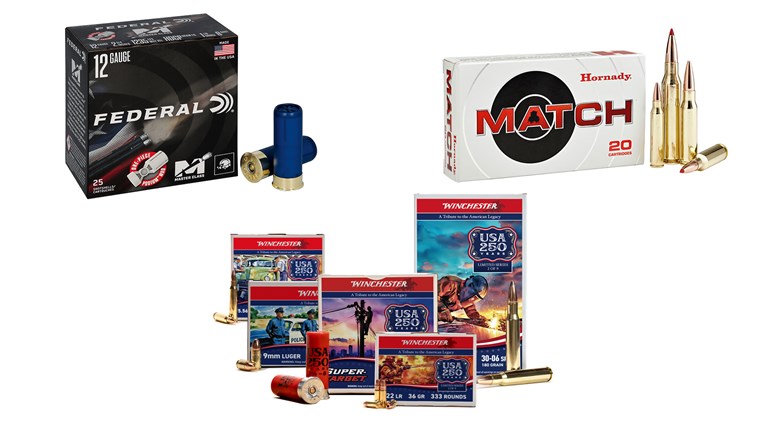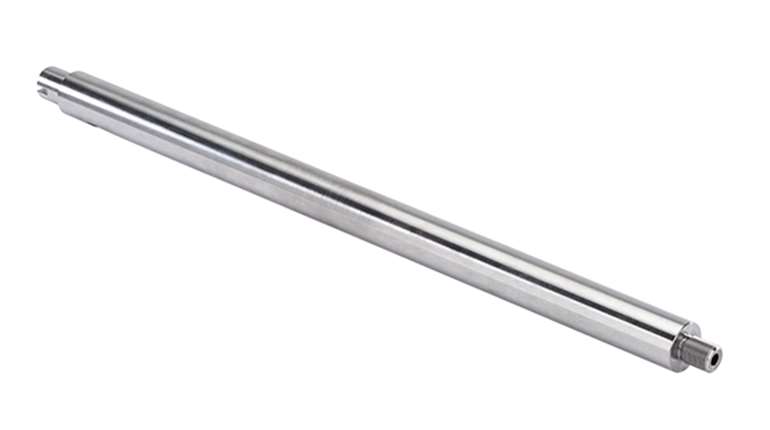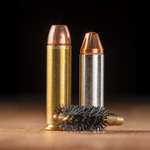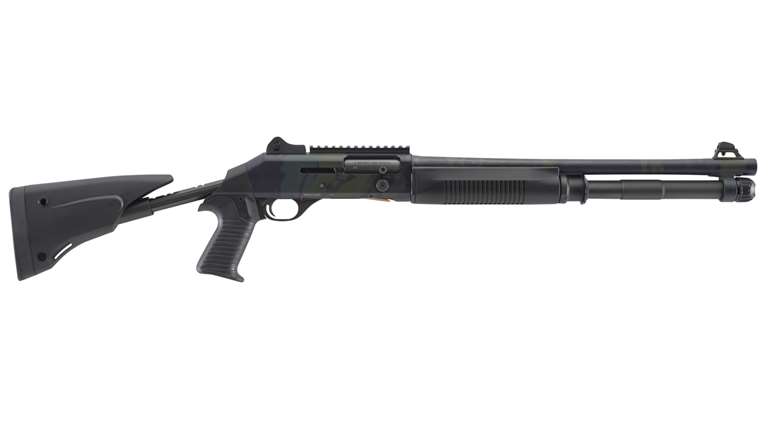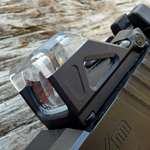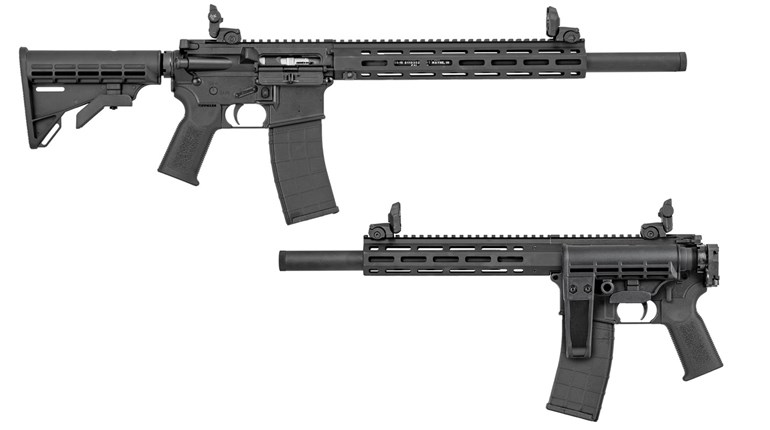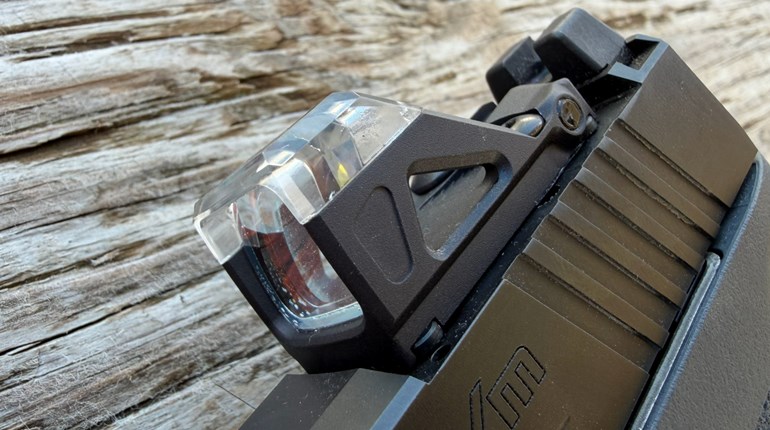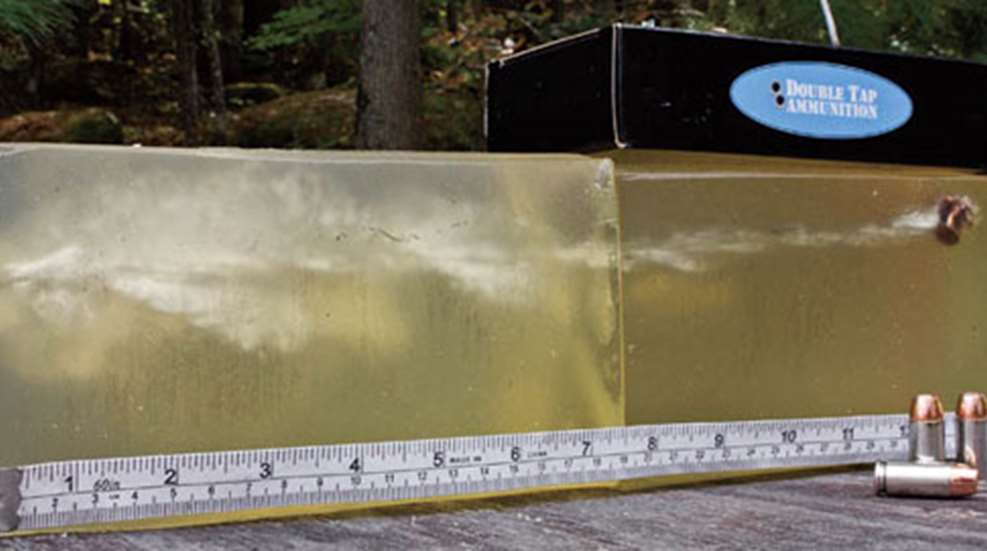
Since a bullet begins to slow the moment it exits the barrel, its kinetic energy decreases during flight. You can compute the kinetic energy of a bullet by squaring the velocity and multiplying it by the weight of the bullet in grains. Then, divide the product by 450,400: (velocity2 x bullet weight)/450,400.
A bullet is a tool we use to do work—to punch a hole in something. If you look at bullets as tools used in a defensive situation, we hope the hole they make will stop an attack. Common sense suggests the bullet that does this best will be the one with the most kinetic energy. The conundrum comes from the fact that bullets work in different ways based on how they are made.
For example, a full metal jacket (FMJ) is not designed to expand, but jacketed hollow-point (JHP) bullets are. An expanding bullet will work differently than a non-expanding bullet. To illustrate this, let's compare two .45 ACP bullets. A 230-grain Federal FMJ with a muzzle velocity of 900 fps will penetrate more than 31 inches of 10-percent ordnance gelatin. By contrast, a 230-grain Federal Hydra-Shok with a muzzle velocity of 900 fps will only penetrate about 15 inches. Both bullets have the same kinetic energy—413 ft.-lbs.—but work differently.
This also applies when comparing a FMJ bullet to a JHP bullet in any caliber. If both bullets weigh the same and impact the target at the same velocity, they both have the ability to do the same amount of work. Their performance, however, depends on their construction.
But what happens when two identical JHP bullets travel at different speeds? Obviously, since kinetic energy is heavily influenced by velocity—actually velocity2—the faster bullet should be able to do the most work. Sometimes the differences are minimal and sometimes they are extreme.
When fired from a 4-inch barrel, a 9 mm +P Winchester 124-grain PDX1, will produce about 1,255 fps. From a 3-inch barrel, the same load will run about 1,135 fps. At the higher velocity, the kinetic energy is 433 ft.-lbs. compared to 354 ft.-lbs. In 10-percent ordnance gelatin, you'll see only about 1-inch difference in penetration.
Conversely, Remington's 9 mm 115-grain JHP produces on average 1,209 fps (373 ft.-lbs.) and penetrates nearly 13 inches when fired from a 4-inch barrel. Out of a 3-inch barrel, that same load generates around 987 fps (248 ft.-lbs.) and penetrates 20 inches.
Why the difference? The PDX1 load was designed to work similarly at the velocity and energy levels produced from both a 3- and 4-inch-barreled handgun. With the Remington JHP load, there was not enough energy or velocity produced from the 3-inch barrel to make the bullet work like it does when fired from the 4-inch barrel. It expands less, so it penetrates deeper.
One of the most common comparisons where kinetic energy is used is when looking at bullets of a different weight within a certain cartridge. For example, you might be trying to decide whether to use a light or heavy 9 mm bullet for defense. This concept can best be applied when bullets of the same type are compared.
For example, Cor-Bon loads a 115-grain Barnes XPB bullet for the 9 mm to a confirmed muzzle velocity of 1,262 fps (406 ft.-lbs.). DoubleTap loads an 80-grain Barnes XPB bullet specially made for the company to a blistering 1,545 fps (423 ft.-lbs.). With similar bullet designs and similar energy levels, the resulting penetration is very similar; 16 inches for the 115-grain bullet and 15 inches for the 80-grain bullet.
Where kinetic energy comparisons really fail to represent actual terminal performance is when bullets of a different design are compared. Speer loads its 155-grain Gold Dot bullet for the .40 S&W to a verified velocity of 1,222 fps (513 ft.-lbs.). DoubleTap loads a 135-grain Nosler JHP bullet for the .40 S&W to a chronographed 1,315 fps (518 ft.-lbs.). Even though the kinetic energy numbers are almost identical, the Speer bullet penetrates 21 percent deeper. The kinetic energy numbers also do not show how wickedly the Nosler bullet destroys the inside of a gelatin block.
Without some allowance for the way different bullets behave as they expand, kinetic energy by itself is not a reliable indicator of the lethality of a particular load. It is, however, a very good indicator of recoil. Newton's third law of motion—for every action there is an equal and opposite reaction—stands true with handguns.
In my Colt Lightweight Commander, I carry Winchester's 950 fps (370 ft-lbs), 185-grain Silvertip load because it expands more than 1.5 times its original diameter and penetrates 9 to 10 inches in 10-percent gelatin. Both are adequate and responsible performance standards for defensive handgun ammunition. This is especially true for civilians who are not often required to shoot through barriers like those routinely encountered by law enforcement officers.
As a comparison, DoubleTap's 185-grain .45 ACP load, which uses a Nosler target bullet, penetrates to about the same depth, but at 1,144 fps (537 ft.-lbs.) the recoil is more intense and so is the destruction inside the gelatin block. This bullet will not expand at velocities slower than about 1,050 fps, but does so violently when impacting at faster speeds. I often carry the DoubleTap load in full-size, steel-frame 1911s that generate full velocity and resist recoil due to their weight.
Kinetic energy is just a number that indicates the ability of a moving bullet to do work. The way a bullet performs is more important and is defined by its design and velocity as opposed to just its kinetic energy. Comparing loads or cartridges based solely on kinetic energy makes as much sense as picking a wife based on bust size. Big numbers are impressive, but can be mis-leading when it comes to performance.













